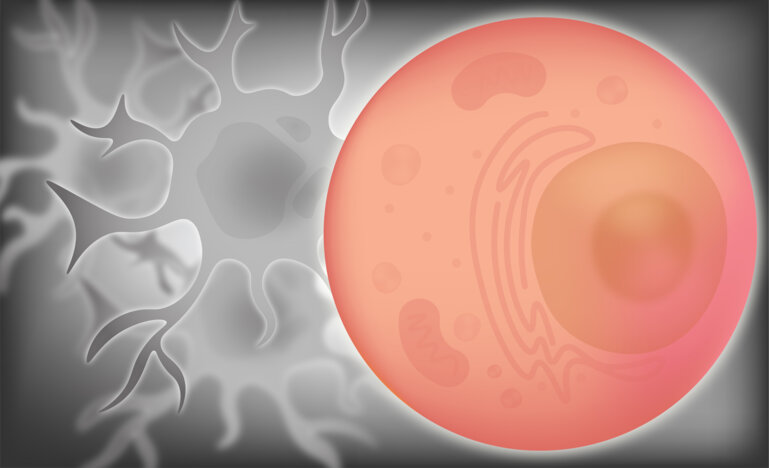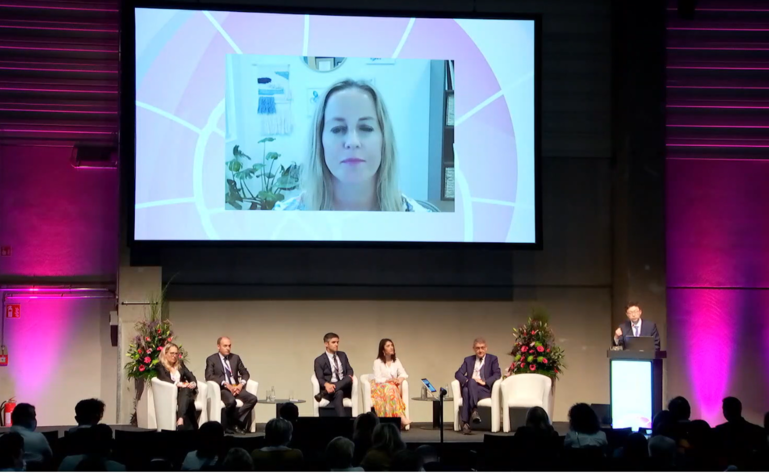Developing therapies for cancers harbouring KRAS mutations has proven difficult but PROTACs, acting via targeted protein degradation, may help combat previously undruggable proteins
A poster presented at the ESMO Targeted Anticancer Therapies Congress 2022 describes an emerging therapeutic modality that is potentially able to tackle challenging-to-treat proteins, such as those found in non-small-cell lung cancer (NSCLC) with KRAS G12C mutations (Abstract 28P). KRAS G12C mutations are harboured by around 13% of NSCLC and yet attempts to target KRAS by both direct and indirect approaches have historically had limited success (NPJ Precis Oncol. 2021;5:98). The recent development of selective small-molecule inhibitors against the KRAS G12C isoform is encouraging; however, it is likely that intrinsic and/or acquired resistance will emerge with these new agents (Cancers. 2021;13:2541).
Chinese researchers are investigating the use of proteolysis-targeted chimeras (PROTACs) to target tumourigenic proteins generated by KRAS G12C mutation. PROTACs are hetero-bifunctional molecules consisting of a ligand for the protein of interest, which is linked to a ligand for E3 ubiquitin (E3) ligase. PROTACs recruit E3 ligase to the protein of interest and cause proximity-induced ubiquitination and proteasomal degradation. Following successful proof-of-concept studies targeting the oestrogen receptor and the androgen receptor (Nat Rev Drug Discov. 2022:1–20), it is hoped that PROTACs may be developed to degrade more difficult disease-causing targets.
In their poster, the researchers describe how they generated more than 50 compounds, made up of different classes of non-covalent KRAS binders and various linker lengths and types in combination with the E3 ligase ligands, VHL or cereblon. Due to their large molecular weight, cell permeability may be a challenge with PROTACs; however, the KRAS degraders developed had moderate membrane permeability and also good plasma stability. Almost all compounds maintained selectivity to KRAS G12C. The representative compound was able to successfully engage VHL in cells, bind KRAS G12C in vitro, induce VHL/KRAS G12C dimerisation and degrade KRAS G12C in cells in a VHL-dependent manner; KRAS G12C ubiquitination and degradation was induced with a DC50 (the concentration at which 50% of the target protein was degraded) of 0.1 μM and Dmax value of 90%. The researchers discovered that the structure of the linker coupled with modifications of the KRAS G12C binder portion were critical in the creation of potent KRAS G12C degraders.
Commenting on the approach, Prof. Markus Jörger from St. Gallen Cantonal Hospital, Switzerland, says, “The novel and unique mode of action of PROTACs could facilitate their potential application in both solid and haematological malignancies, particularly in difficult-to-treat situations including (multi-)resistant malignancies when standard treatment options have failed. Success in this aspect, together with increased understanding of the functions and tissue-specific expression of more than 600 human E3 ubiquitin ligases, could greatly broaden the feasibility, utility and selectivity of PROTAC technology.”
Abstract discussed:
Zhang Z, et al. Discovery of potent PROTAC degraders of KRASG12C based on a reversible non-covalent KRAS binder. ESMO Targeted Anticancer Therapies Congress 2022, Abstract 28P






